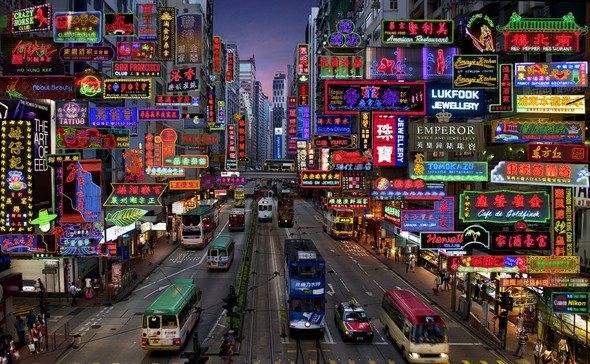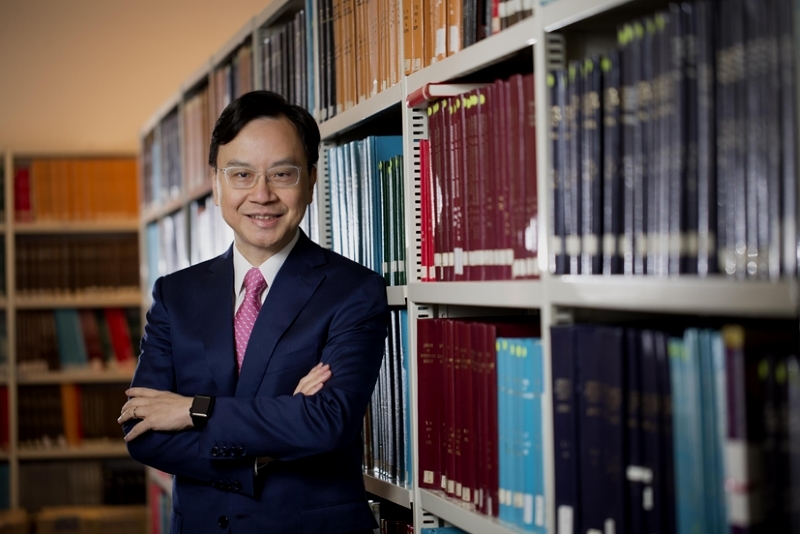Hong Kong,
September 2023
Post-COVID and with a national-level strategy in place to bolster its traditional strengths as well as spearhead entry into new sectors, Hong Kong has reason for optimism once again.
One of two special administrative regions (SARs) in southern China with separate laws and regulations to the rest of the country, Hong Kong has had to overcome several challenges in its recent history. Most notable among these was perhaps the COVID-19 pandemic and the subsequent decision to pursue a ‘zero-COVID’ elimination strategy. Hong Kong, like mainland China, essentially closed its borders and subjected even mild and asymptomatic cases to hospitalisation and sometimes isolation extending over several weeks. This naturally had an impact on both Hong Kongers’ psyches as well as their economy, although real GDP is projected to grow at a robust 3.5 and 3.1 percent in 2023 and 2024, respectively.
Added to this is the fact that, for the first time in decades, China as a whole is facing a slowdown in its spectacular economic growth story. Deflation is on the rise, a once-booming real estate sector is stalling, foreign direct investment and exports are down, and youth unemployment stands at a record 20 percent high.
When the geopolitical stand-off between the US and China is also taken into account, one could be forgiven for being cautious about Hong Kong’s prospects. However, the city retains all of the characteristics and fundamentals that led to it establishing itself as Asia’s premier financial and trading hub, and now has an overarching strategy in place to broaden its footprint in new areas.
China’s 14th five-year plan, set to run between 2021 and 2025 specifically lays out support for Hong Kong’s ‘four traditional centres’ of finance, transport, trade, and legal and dispute resolution services. However, for the first time, support will also be lent to the enhancement, establishment, and development of the ‘four emerging centres’ of aviation, innovation and technology, intellectual property, and cultural exchange. The plan also includes strategy for accelerating the development and integration of the Guangdong-Hong Kong-Macao Greater Bay Area (GBA) initiative, a megalopolis that includes China’s two SARs as well as nine southern Chinese cities, representing 87 million people and a USD two trillion combined economy.
China’s top leadership have been forthright on the importance of Hong Kong to the country’s goals. Earlier this year, President Xi Jinping said that “In the past few years, Hong Kong has gone through various severe challenges one after another, and has defeated them … After the wind and rain, Hong Kong has risen from the ashes, and showed strong vibrancy.” Calling Hong Kong “an integral part of the country’s overall development,” Xi sees the city as having been “an important window and bridge connecting the Chinese mainland with the world,” playing a vital role in China’s economic successes since the implementation of the economic ‘Reform and Opening Up’ policy back in the 1970s.
While riding out economic and geopolitical storms is never easy, there is a sense of optimism among the leaders from Hong Kong’s government, industry, and academia featured in this report. Time will tell the true impact of the ambitious reforms and strategies currently being rolled out, but the fact that the city now has a structured transformation plan in place is a clear positive.
Post-COVID and with a national-level strategy in place to bolster its traditional strengths as well as spearhead entry into new sectors, Hong Kong has reason for optimism once again.
One of two special administrative regions (SARs) in southern China with separate laws and regulations to the rest of the country, Hong Kong has had to overcome several challenges in its recent history. Most notable among these was perhaps the COVID-19 pandemic and the subsequent decision to pursue a ‘zero-COVID’ elimination strategy. Hong Kong, like mainland China, essentially closed its borders and subjected even mild and asymptomatic cases to hospitalisation and sometimes isolation extending over several weeks. This naturally had an impact on both Hong Kongers’ psyches as well as their economy, although real GDP is projected to grow at a robust 3.5 and 3.1 percent in 2023 and 2024, respectively.
Added to this is the fact that, for the first time in decades, China as a whole is facing a slowdown in its spectacular economic growth story. Deflation is on the rise, a once-booming real estate sector is stalling, foreign direct investment and exports are down, and youth unemployment stands at a record 20 percent high.
When the geopolitical stand-off between the US and China is also taken into account, one could be forgiven for being cautious about Hong Kong’s prospects. However, the city retains all of the characteristics and fundamentals that led to it establishing itself as Asia’s premier financial and trading hub, and now has an overarching strategy in place to broaden its footprint in new areas.
China’s 14th five-year plan, set to run between 2021 and 2025 specifically lays out support for Hong Kong’s ‘four traditional centres’ of finance, transport, trade, and legal and dispute resolution services. However, for the first time, support will also be lent to the enhancement, establishment, and development of the ‘four emerging centres’ of aviation, innovation and technology, intellectual property, and cultural exchange. The plan also includes strategy for accelerating the development and integration of the Guangdong-Hong Kong-Macao Greater Bay Area (GBA) initiative, a megalopolis that includes China’s two SARs as well as nine southern Chinese cities, representing 87 million people and a USD two trillion combined economy.
China’s top leadership have been forthright on the importance of Hong Kong to the country’s goals. Earlier this year, President Xi Jinping said that “In the past few years, Hong Kong has gone through various severe challenges one after another, and has defeated them … After the wind and rain, Hong Kong has risen from the ashes, and showed strong vibrancy.” Calling Hong Kong “an integral part of the country’s overall development,” Xi sees the city as having been “an important window and bridge connecting the Chinese mainland with the world,” playing a vital role in China’s economic successes since the implementation of the economic ‘Reform and Opening Up’ policy back in the 1970s.
While riding out economic and geopolitical storms is never easy, there is a sense of optimism among the leaders from Hong Kong’s government, industry, and academia featured in this report. Time will tell the true impact of the ambitious reforms and strategies currently being rolled out, but the fact that the city now has a structured transformation plan in place is a clear positive.
See more






















